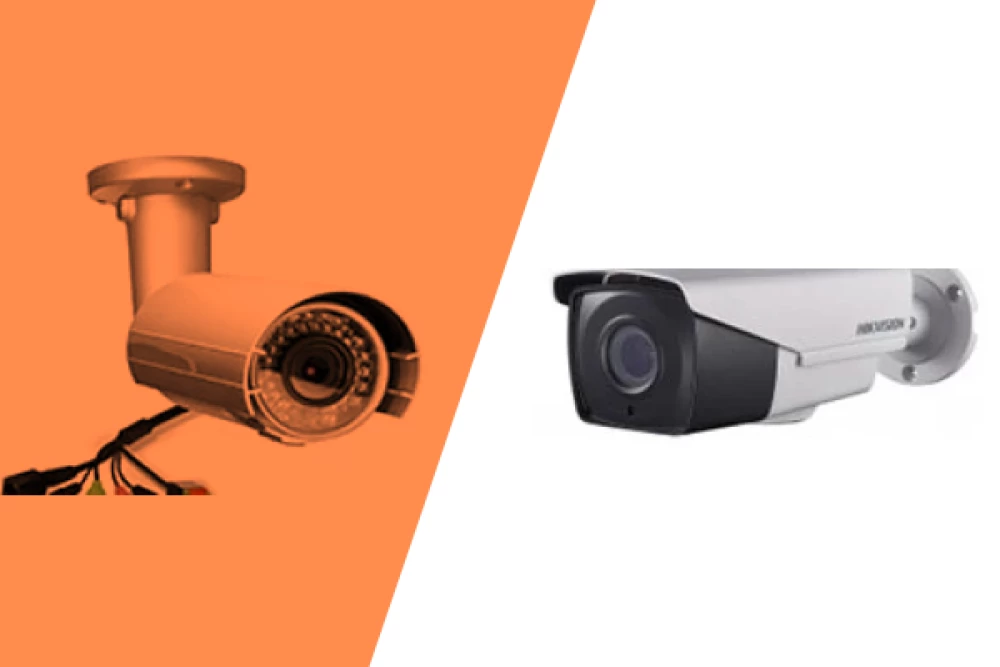Video Surveillance & Security
How to Size a Video Surveillance System: Resolution, Camera Placement, and Storage

Choosing the Right Resolution: Detail, Identification, and Bandwidth Constraints
Resolution is the first deciding factor when selecting a camera. The higher it is, the more detailed the image. But it also impacts bandwidth, storage requirements, and NVR capacity. Resolution should therefore be chosen according to the intended use — not simply by aiming for the highest definition available.
Common resolutions in 2025 range from 2 MP to 12 MP. For areas where the goal is simply to get an overview, a 2 MP camera can be sufficient. Conversely, for identification zones — entrance doors, reception desks, cash registers — a resolution of at least 4 MP is recommended, as it provides the necessary detail for facial recognition or license plate readability. Eight- or twelve-megapixel cameras offer even higher detail but significantly increase network and recorder load.
Resolution also affects the field of view. Ultra-high definition can cover wider angles while maintaining good detail in central areas. However, stretching the field too far may reduce the clarity of important elements. Fisheye cameras, for example, cover large spaces but often require software processing to correct distortion and produce an exploitable view.
Finally, each resolution generates a specific video bitrate. A 4 MP camera can produce a stream of 4 to 8 Mbit/s depending on compression settings, while an 8 MP camera may exceed 12 Mbit/s. The network must therefore be sized accordingly: proper PoE switches, certified cabling, and segmentation of video streams to avoid congestion.
Camera Placement and Field of View: Avoiding Blind Spots and Optimizing Coverage
Poor camera placement can turn a high-quality system into an ineffective installation. Placement is a critical parameter: height, angle, lighting, obstacles, backlighting, and traffic flow all influence image quality. Sizing a system requires a precise analysis of each monitored area.
For entrances, it is recommended to orient cameras so they capture a frontal view of faces. Backlighting issues caused by large windows are common; cameras equipped with WDR (Wide Dynamic Range) should be preferred to balance dark and bright zones. Circulation areas — hallways, staircases, elevators — require narrower angles and well-placed cameras to avoid uncovered areas.
Large spaces such as parking lots, lobbies, or outdoor zones require wide-angle cameras or motorized PTZ models to adjust the field of view. However, PTZ cameras do not replace fixed models: when they rotate, some zones remain unmonitored. They should be used as complements for situational awareness or specific analyses.
Placement must also consider lighting conditions. At night, a camera facing a direct light source may become unusable. Models equipped with intelligent IR, varifocal lenses, or enhanced low-light sensors offer better performance in such situations. Finally, to avoid blind spots, it is recommended to conduct tests or coverage simulations before final installation.
Storage and Retention: Calculating Required Capacity and Ensuring Reliability
Storage is often underestimated, yet it is a critical component of system sizing. Legal or operational retention periods, camera resolution, and the number of devices directly influence required capacity. It is important to comply with retention rules: in many cases, 30 days is used as a reference, but needs vary depending on the environment.
Storage capacity depends on the bitrate generated by each camera. For example, a 4 MP camera encoded in H.265 uses around 2 to 4 GB per day. With 20 cameras, this already represents 40 to 80 GB per day. Over 30 days of retention, this amounts to 1.2 to 2.4 TB. An 8 MP camera can double or triple this consumption. Storage must therefore be sized with safety margins, especially if the system records continuously or detects numerous motion events.
Storage reliability also depends on the hardware. Modern NVRs use disks designed for surveillance workloads, capable of running continuously. For more complex installations, RAID systems provide redundancy in case of disk failure. Hybrid architectures — local storage plus cloud backup — further improve resilience and remote accessibility.
Finally, it is essential to manage multiple streams: a main stream for high-quality recording and a secondary stream for remote viewing. This reduces network load without compromising recording quality. Proper sizing must therefore consider storage volume, disk performance, and the system’s overall reliability.
MAG.
Wi-Fi & Network
Cybersecurity & Backup
Video Surveillance & Security
Consulting
IT Managed Services
Video Surveillance & Security

Video Surveillance & Security
Video Surveillance in Hotels: Security, Compliance and ...
Why Video Surveillance Has Become Essential for Hotels In a hotel environment, security relies on ...
+
+

Video Surveillance & Security
IP Cameras vs Analog Cameras: Which Solution Should You ...
Analog Cameras: A Still-Viable Technology, but with Clear Limitations Analog systems rely on ...
+
+
Your hotel deserves IT excellence
Let's discuss your challenges, whether you're in the hospitality sector or an SME.